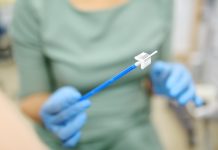Dr Deborah Lee, Dr Fox Online Pharmacy, discusses the link between menopause and type-2 diabetes, as well as the use of hormone replacement therapy (HRT) in diabetic perimenopausal women
Doctors have been reluctant in the past, to prescribe hormone replacement therapy (HRT) for perimenopausal women with type-2 diabetes (T2DM). This was because diabetes is known to increase the risk of cardiovascular disease, and HRT was also believed to do the same.
However, here’s the good news. Things have changed. Diabetes is no longer a definitive reason to withhold HRT. Many in the medical profession, and diabetic women themselves, remain unaware this is the case. Read on below and find out the reasons why.
Please note that there is a lack of evidence about the use of HRT for women with type-1 diabetes. These women need specialist advice from their specialist Diabetes and Menopause care providers about how to manage their menopause and the use of HRT.
The link between menopause and type-2 diabetes (T2DM)
The number of cases of T2DM is steadily increasing. 3.9 million people are now living in the UK with T2DM, and this figure is set to rise to 5.3 million by 2025 (Diabetes UK 2020). This is mainly due to the rise in obesity, and the natural effects of ageing. However, declining ovarian function at menopause is also known to increase the risk of diabetes.
For example, premature menopause increases the risk of T2DM by 32% (2013 EPIC-InterAct study) and these findings have also been confirmed in other studies.
But why should this be?
Why does menopause increase the risk of T2DM?
There are several, physiological and metabolic reasons why the cessation of ovarian function and the consequent declining estrogen levels, increase the risk of T2DM.
- Changes in the distribution of body weight – At and after menopause, there is a shift in the distribution of body weight, with an increase in intrabdominal fat (visceral fat). Women often notice they become more apple-shaped than pear-shaped. Visceral fat is dangerous fat.
- Reduction in energy from the breakdown of fat – Estrogen deficiency favours fat storage and deposition, along with a decline in fat oxidation – the breakdown of fat to produce energy.
- Less physical activity after menopause – At and after menopause, women tend to become more sluggish and less physically active, possibly due to a loss of function in their estrogen receptors (ER- α).
- Decreased muscle mass – Studies have shown that postmenopausal women have decreased lean tissue (muscle mass) as compared to their premenopausal counterparts. (Normal ageing also results in loss of muscle – known as sarcopenia.)
- Increased chronic systemic inflammation – Visceral fat is an active tissue that secretes hormones and cytokines (chemical messengers). The postmenopausal period is also a time of relative androgen (testosterone) excess. These occurrences underpin the development of insulin resistance (IR).
- Insulin resistance (IR) – This occurs when the cells in the body become less responsive to the hormone insulin. Normally, when blood glucose levels rise, insulin is secreted and lowers glucose levels. Insulin causes cells to take up glucose inside them, which they need for energy. When IR occurs, cells fail to respond to insulin, meaning blood glucose levels remain elevated. Insulin levels also remain high, and the cells are relatively starved of glucose.
- The pancreas is under pressure – Animal studies have shown that the insulin-secreting, β cells of the postmenopausal pancreas, have to work harder to compensate for insulin resistance. If there is also a genetic susceptibility to diabetes, this might explain the increased risk of T2DM in postmenopausal women.
HRT for women with T2DM
When a woman takes HRT, she is replacing some of the estrogen that has been lost due to menopause. There is very convincing medical evidence to support the beneficial effects of HRT for women with T2DM.
For example, one very large 2006 meta-analysis, included a huge 107 publications (from 1966 – 2004) that investigated the relationship of HRT to the components of metabolic syndrome.
HRT was shown to be statistically significantly –
- Reduce levels of abdominal fat
- Improve insulin resistance
- Reduce the incidence of new-onset cases of T2DM (by 30%)
- Reduce blood pressure
- Favourably change blood cholesterol levels, – a reduction in LDL ‘bad’ cholesterol, and an improved LDL/HDL ratio.
Oral HRT had a more pronounced effect than transdermal (patch HRT).
HRT is believed to have caused these improvements because –
- Estrogen reduces abdominal fat deposition, by increasing fat oxidation – the breakdown of fat to produce energy.
- Estrogen is thought to act directly on estrogen receptors which are present in muscle tissue, the liver, and in fat cells themselves, to lower IR, and hence improve blood glucose control.
- Estrogen may also have a direct effect on pancreatic β cells to stimulate insulin secretion.
Which HRT?
Most clinical trials have involved women taking conjugated estrogens (CEE) with progesterone medroxyprogesterone acetate (MPA). Oral estrogens (HRT taken by mouth) have been shown to have a greater effect than transdermal (patch HRT) preparations. On the other hand, oral estrogens do have some disadvantages. They increase the production of triglycerides in the liver and increase clotting factors and inflammatory markers, more than transdermal products.
Research has demonstrated that progestogens blunt the benefits of estrogens. Different progesterones have specific glucocorticoid (anti-inflammatory) and mineralocorticoid (regulation of salt and water) activity – both of which can affect IR.
- Women who can take estrogen-only HRT (those without a uterus) are in the best position as they don’t need progesterone at all.
- For those who need to take progesterone – (women who do have a uterus), the current most favourable progesterones to improve IR, are natural progesterone, norethisterone acetate (NETA), and dydrogesterone.
When can women with T2DM take HRT?
Each patient needs to be assessed as an individual, and the decision to take HRT will be different for everyone. However, the general principles set out below apply. In essence, this is about assessing women according to their cardiovascular risk.
-
Perimenopausal or newly postmenopausal women with T2DM
In women who are perimenopausal or newly postmenopausal, but have no obvious risk factors for cardiovascular disease, an oral HRT with a recommended progesterone such as natural progesterone, norethisterone acetate, or dydrogesterone are reasonable options. Oral HRT will have a greater effect on glucose and lipid metabolism.
-
Older women over age 60/65 years with T2DM
Caution needs to be exercised for older women, aged 60 or over, or more than 10 years after menopause, who have never taken HRT. This is because by the age of 60, atheromatous plaques will already have become established in arterial walls, and when HRT is first initiated, it might destabilise these plaques, resulting in a thrombotic (blood clot) or an embolic (stroke or heart attack) event.
-
The ‘’window of opportunity’
To get the best benefits from HRT this needs to be taken through the window of opportunity – this is the time when menopausal symptoms first become apparent – and taken for 5-10 years – to age 60/65 years. Menopause specialists believe that this is when HRT will provide the greatest benefits.
HRT has many beneficial effects to lower the risk of heart disease – it slightly lowers blood pressure, has a favourable effect on cholesterol, and helps keep arterial walls smooth and healthy.
If, however, HRT is not taken during this time but is started after age 60 or beyond, the opportunity for the protective effects will have been lost, atherosclerosis is likely to have set in, and adding in HRT may be risky rather than beneficial.
-
Assessing cardiovascular risk
Having said this, obese, older women with T2DM, who want to use HRT, should have their cardiovascular risk assessed. Sometimes, specialists advocate using a coronary artery calcification score to try and identify women with established cardiovascular disease. If they are found not to be at obvious higher risk, then transdermal HRT could be used.
Final thoughts
Menopause itself is linked to an increased risk of T2DM. T2DM is a risk factor for CVD. HRT has favourable metabolic and physiologic effects, to lower several of the parameters that are important in the development of cardiovascular disease.
It is no longer the case that all diabetic women should not be offered HRT. Each woman should be assessed as an individual, and her cardiovascular risk assessed. HRT offers substantial benefits for women with T2DM, who have much to gain if it is started early in the perimenopausal period and continued for 5-10 years through the window of opportunity.
If you have T2DM, are menopausal, and are unsure what to do about HRT, speak to your GP. Alternatively, you can ask for a referral to an NHS menopause clinic for specialist advice. You can find specialist NHS menopause services here.
For more information
- Diabetes UK – Menopause and diabetes.
- International Menopause Society (IMS) Guidelines – Menopause and diabetes: an EMAS guideline for the clinician.
- Trend UK – Diabetes and the menopause.
References:
https://link.springer.com/article/10.1007/s13300-019-00695-y
https://mytype1diabetes.nhs.uk/media/2701/a5_menopause_trend.pdf
https://journals.plos.org/plosmedicine/article?id=10.1371/journal.pmed.1003731
https://www.diabetes.org.uk/about_us/news/diabetes-prevalence-2019
https://www.nature.com/articles/ijo200825
https://pubmed.ncbi.nlm.nih.gov/7885283/
https://pubmed.ncbi.nlm.nih.gov/16918589/
https://mytype1diabetes.nhs.uk/media/2701/a5_menopause_trend.pdf











